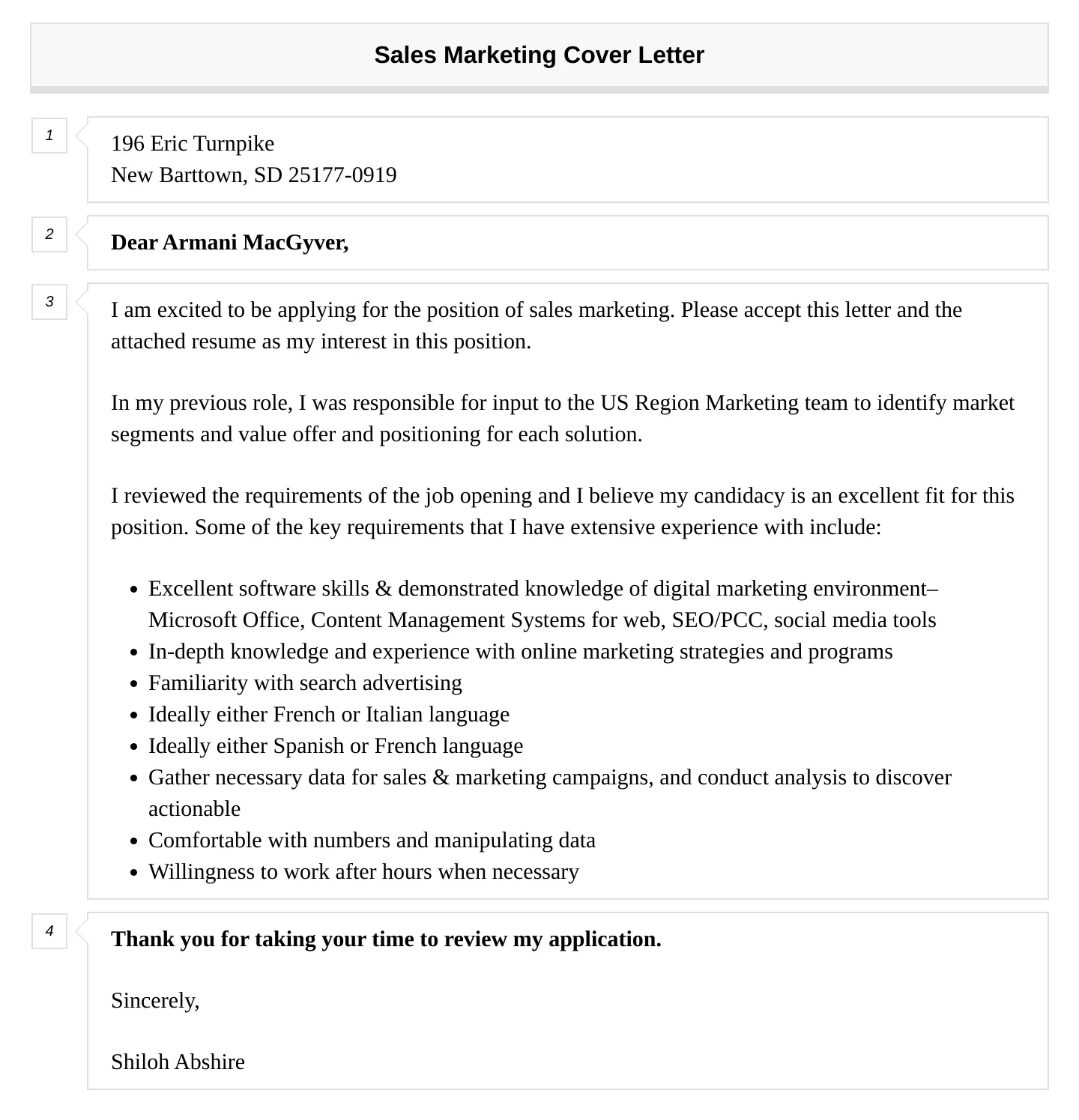Highlighting Your Marketing Sales Skills
A marketing sales cover letter is your first introduction to a potential employer, and it’s your chance to make a strong impression. It’s not just a formality; it’s a crucial marketing tool that showcases your abilities, experiences, and enthusiasm for the role. A well-crafted cover letter can significantly increase your chances of landing an interview and ultimately, the job. Your marketing sales cover letter needs to immediately convey the value you bring to the table. To do this effectively, focus on highlighting the specific skills the employer is looking for, and how you’ve successfully utilized those skills in previous roles. Think of your cover letter as a targeted marketing campaign for yourself. Every detail, from the language you use to the structure of your letter, should be carefully considered and designed to capture the reader’s attention and persuade them that you are the ideal candidate.
Understanding the Purpose of a Marketing Cover Letter
The primary purpose of a marketing sales cover letter is to introduce yourself, express your interest in a specific position, and highlight your qualifications. However, a great cover letter does much more than simply repeat your resume. It should tell a story about you—your career journey, your goals, and your unique value proposition. It should also establish your personality and demonstrate your communication skills. Think of your cover letter as an extension of your brand, allowing you to communicate who you are, what you offer, and why you’re the best fit for the job. In essence, the cover letter is a sales pitch. You’re selling your skills, experience, and enthusiasm to the hiring manager. Therefore, it’s essential to tailor it to each job application to show that you understand the company’s needs and can help them achieve their goals. You should aim to answer the ‘Why you?’ question, not just the ‘What you?’ question.
Tailoring Your Marketing Cover Letter for Impact
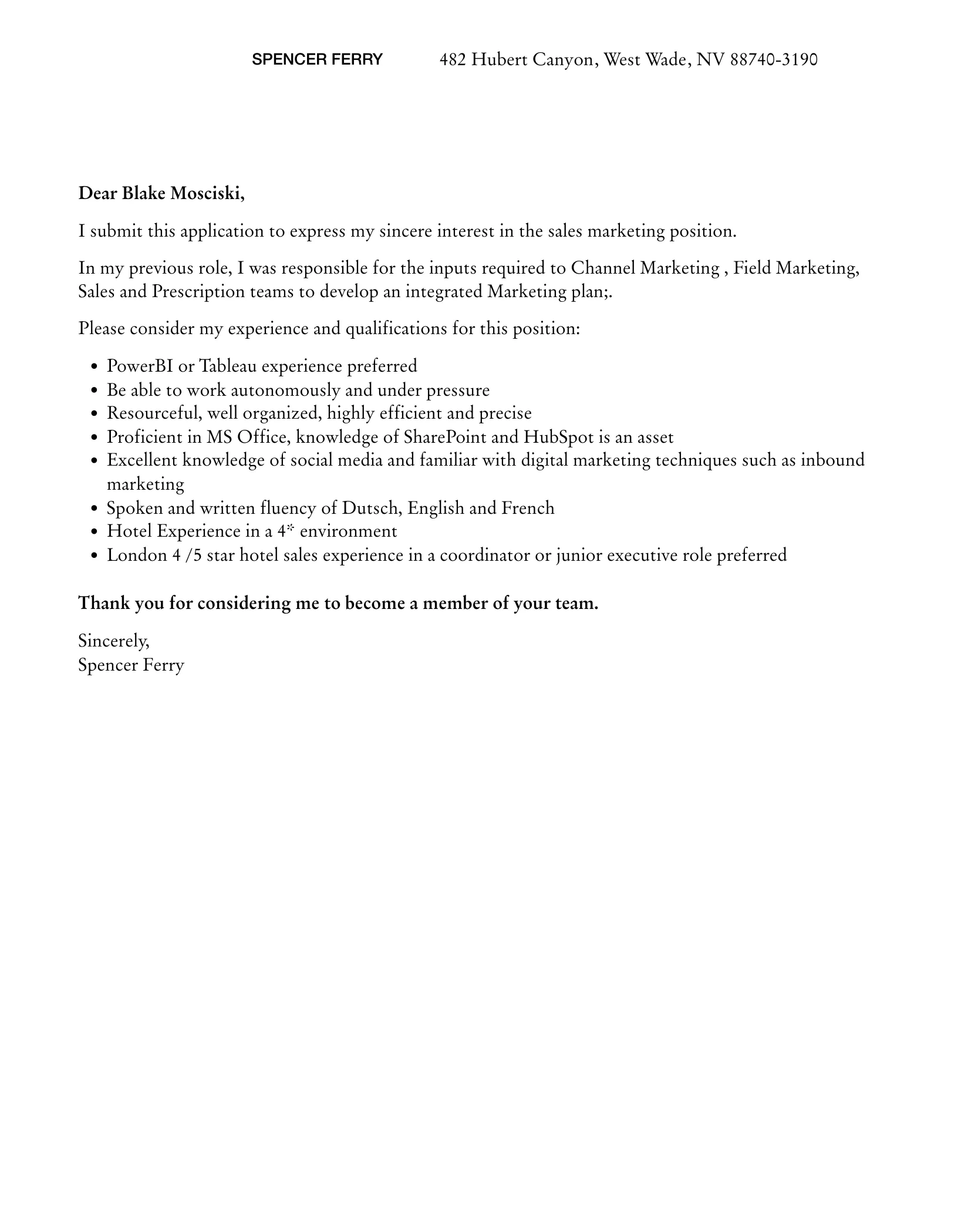
One of the most common mistakes job seekers make is sending a generic cover letter. Each cover letter should be tailored to the specific job and company to make a real impact. Start by carefully researching the company and the role you’re applying for. Understanding their mission, values, and current challenges allows you to tailor your cover letter to show how you can contribute to their success. Make sure to reflect this in your cover letter, referencing specific projects, achievements, and skills that align with the job description. When you tailor your cover letter, you demonstrate to the employer that you care enough to put in the extra effort. This not only increases your chances of getting an interview but also sets you apart from other candidates. Remember, personalization is key.
Researching the Company
Before you start writing, dedicate time to research. Visit the company’s website, read their ‘About Us’ page, and explore their social media presence. Check for recent news, press releases, and any relevant articles or industry reports. This research gives you insights into their current projects, challenges, and company culture. By showing you’ve taken the time to understand their business, you make a strong impression. Look for keywords and themes in the company’s messaging that you can subtly incorporate into your cover letter to demonstrate that you understand and align with their brand. This in-depth understanding can also help you identify specific ways you can contribute to their goals. Remember, your aim is to prove you are a good fit for the company.
Analyzing the Job Description
Carefully analyzing the job description is crucial to tailor your cover letter effectively. Identify the key requirements, skills, and qualifications the employer is seeking. Make a list of these keywords and phrases. Then, examine your resume and experiences to find examples that match these requirements. Frame your cover letter around these matches. Provide specific examples of how you’ve used your skills to achieve results in the past. Always quantify your achievements, using data and metrics wherever possible. This will show the employer how you can add value to their company. Align your skills and experience with the job description. By addressing the requirements directly, you’re showing the hiring manager that you’re a strong contender.
Showcasing Relevant Marketing Sales Skills
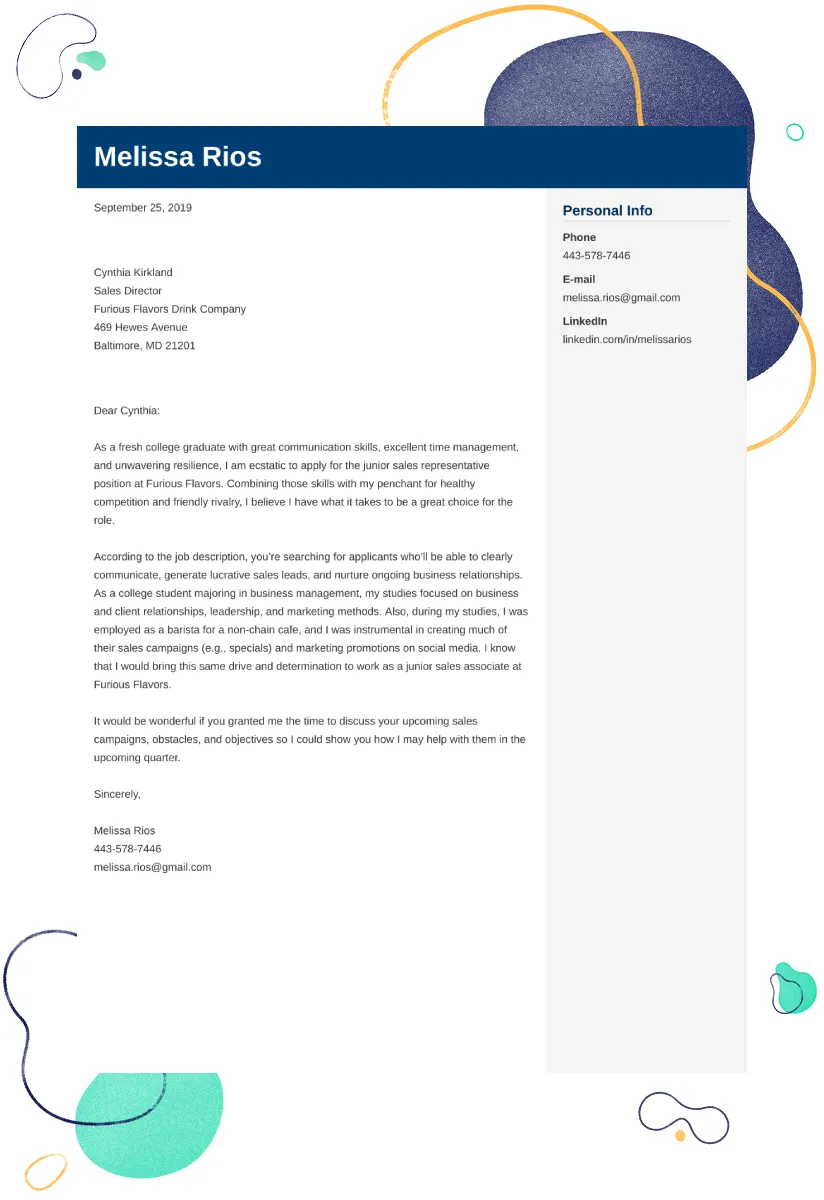
In your cover letter, focus on the marketing sales skills most relevant to the job. These could include areas such as lead generation, content creation, social media marketing, SEO, email marketing, data analysis, and customer relationship management (CRM). Provide concrete examples of how you’ve used these skills to achieve successful outcomes. For example, if the job requires social media skills, describe a campaign you managed that increased follower engagement or generated leads. Be specific and avoid vague statements. Use action verbs, such as ‘developed,’ ‘implemented,’ ‘managed,’ and ‘achieved,’ to showcase your accomplishments. For example, “Developed and implemented a social media strategy that increased follower engagement by 40%.” This approach helps the reader understand your capabilities immediately.
Quantifying Your Achievements
Quantifying your achievements is one of the most effective ways to make your cover letter stand out. Whenever possible, use numbers and metrics to demonstrate your impact. Instead of saying, ‘Increased sales,’ write, ‘Increased sales by 25% in one quarter.’ Use this approach in your cover letter to highlight your successes and demonstrate your value to the employer. For example, when describing a successful email marketing campaign, mention how many new leads were generated or how the conversion rate improved. These metrics give the hiring manager a clear picture of the results you can deliver. Always include data. If you don’t have specific numbers, consider using percentages or ratios to illustrate your achievements. The goal is to provide concrete evidence of your skills and effectiveness.
Creating a Compelling Opening
The opening paragraph of your cover letter is critical. It’s your chance to grab the reader’s attention and encourage them to continue reading. Avoid generic openings such as ‘I am writing to express my interest…’ Instead, start with a strong statement that captures your enthusiasm and highlights your most relevant qualifications. You can mention a specific achievement, express your admiration for the company, or reference how your skills align with their needs. The opening is the hook, and the goal is to immediately showcase why you are a great fit. A compelling opening sets the tone for the rest of your letter. Keep it concise and engaging. Remember, you only have a few seconds to make an impression, so use your opening to your advantage.
Grabbing Attention from the Start
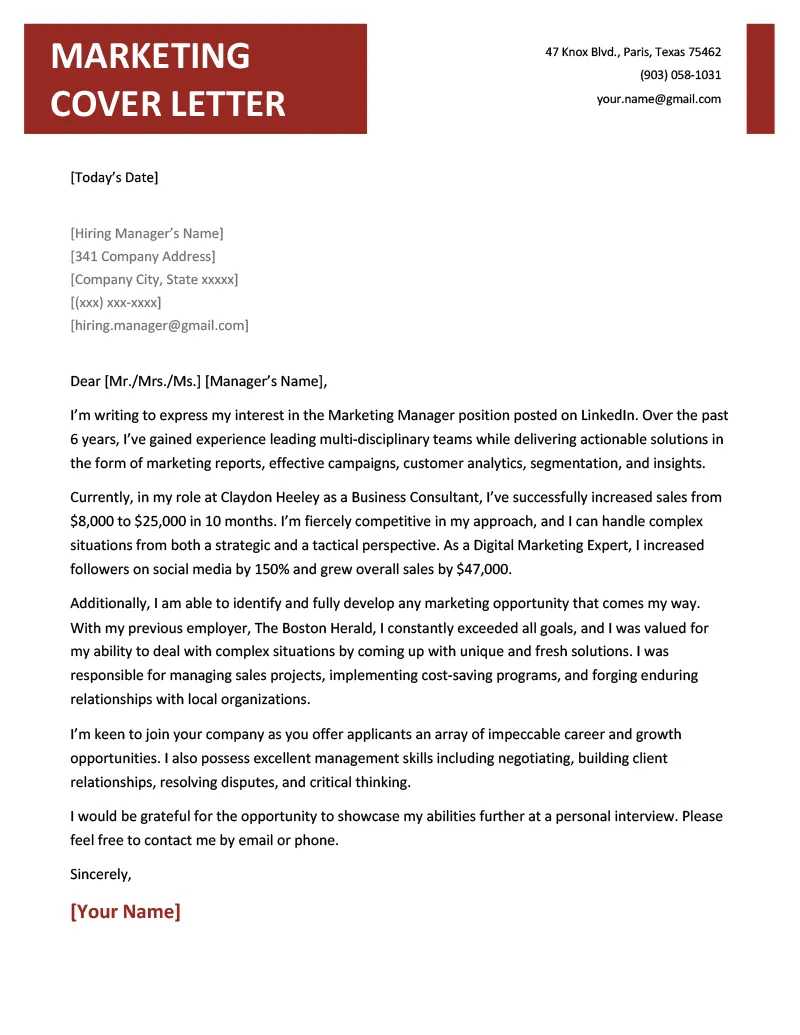
To grab the reader’s attention, you need to stand out from the crowd. Start with a strong, attention-grabbing opening sentence. This could be a brief summary of a significant achievement, or a statement that showcases your enthusiasm for the role. Tailor your opening to the specific job and company. Research the company’s values and mission and subtly integrate those elements into your opening. Be concise and to the point. The goal is to capture the hiring manager’s interest immediately and encourage them to read the rest of your letter. Highlighting a key skill or achievement relevant to the job. Make sure your opening is relevant and memorable. Show why you want to be a part of the company.
Showcasing Your Passion for Marketing Sales
Express your passion for marketing sales to connect with the hiring manager on a deeper level. Share why you are interested in the role and the company, and highlight your enthusiasm for the industry. Your passion will show the hiring manager that you are truly invested in the role. This means showcasing your personal brand and career goals. Demonstrate that you are not just looking for a job, but a career. Mention specific company projects or initiatives that excite you. Expressing genuine enthusiasm differentiates you from other applicants. When you show your passion, you also build a personal connection. This can leave a lasting impression. Make sure your enthusiasm is genuine and comes through in your writing.
Structuring Your Cover Letter Effectively
A well-structured cover letter is easier to read and more impactful. Generally, it should include an opening paragraph, a body, and a closing. The opening should immediately grab the reader’s attention, and the body should provide specific examples that showcase your skills and achievements. In the closing paragraph, restate your interest in the role and express your gratitude for the reader’s time. Keep your cover letter concise. Avoid long paragraphs and use clear, concise language. Use bullet points or numbered lists to highlight key achievements and skills. A good structure allows your cover letter to be scanned quickly while still conveying all the necessary information. Keep the formatting clean and simple to ensure it is readable.
The Body Paragraphs Strategies
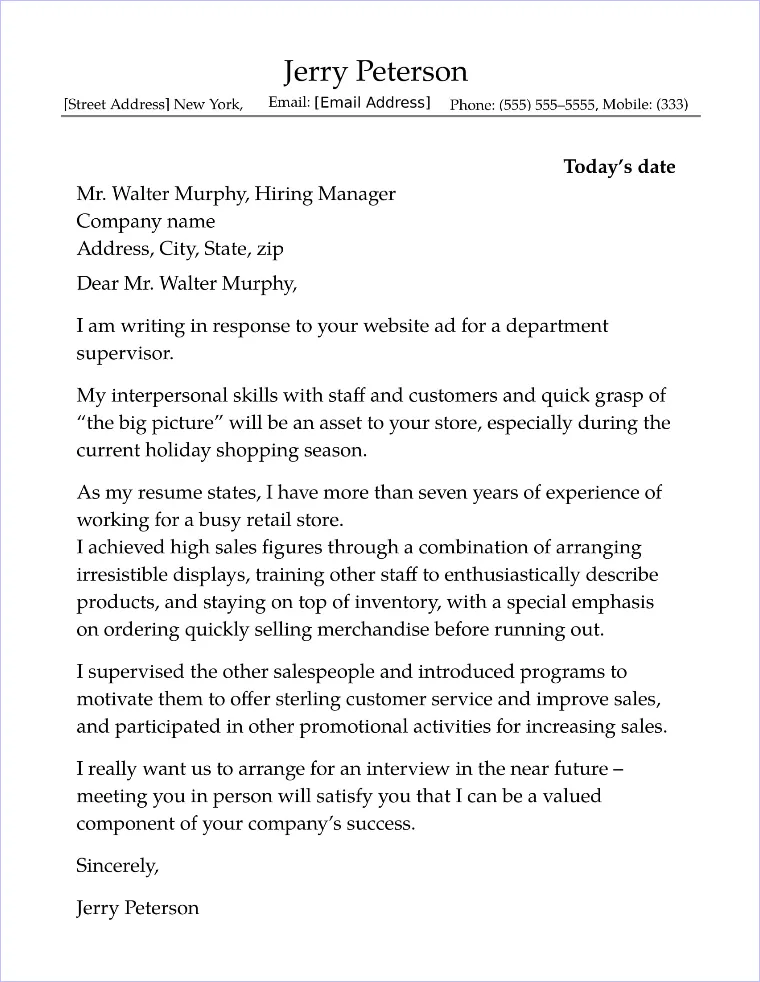
The body of your cover letter is where you provide detailed information about your qualifications and experiences. Each paragraph should focus on a specific skill or achievement. For example, use one paragraph to highlight your experience with lead generation, another to discuss your social media marketing campaigns, and another for your results. Provide concrete examples of how you’ve used your skills to achieve successful outcomes, using the STAR method: Situation, Task, Action, Result. Explain the situation, the task you undertook, the action you took, and the results you achieved. Use the STAR method to structure your examples. Always quantify your accomplishments with data and metrics, when possible. This will help you highlight your specific skills and achievements.
Highlighting Your Accomplishments
Highlighting accomplishments is the key to making your cover letter persuasive. Instead of just listing your job responsibilities, focus on what you achieved in each role. Use the STAR method to describe your accomplishments. Provide specific details about the projects you’ve worked on, the results you’ve achieved, and the skills you’ve used. Quantify your accomplishments whenever possible. Use metrics and data to demonstrate your impact. For example, instead of saying you ‘improved website traffic,’ state that you ‘increased website traffic by 30% in six months.’ Always focus on your accomplishments and results. This approach shows the hiring manager the value you bring to the table.
Using Keywords Effectively
Use keywords strategically throughout your cover letter to ensure it aligns with the job description and applicant tracking systems (ATS). The job description is your guide. Identify the most important keywords related to the role and incorporate them naturally into your cover letter. Do not simply stuff keywords into your writing; ensure they fit organically within your sentences and paragraphs. By using relevant keywords, you can help your cover letter get noticed by both the hiring manager and any ATS the company may be using. Keywords help you demonstrate that you meet the requirements of the job. Balance keyword usage with clear, concise writing. Focus on the most critical skills and experience highlighted in the job description.
Crafting a Strong Closing Statement
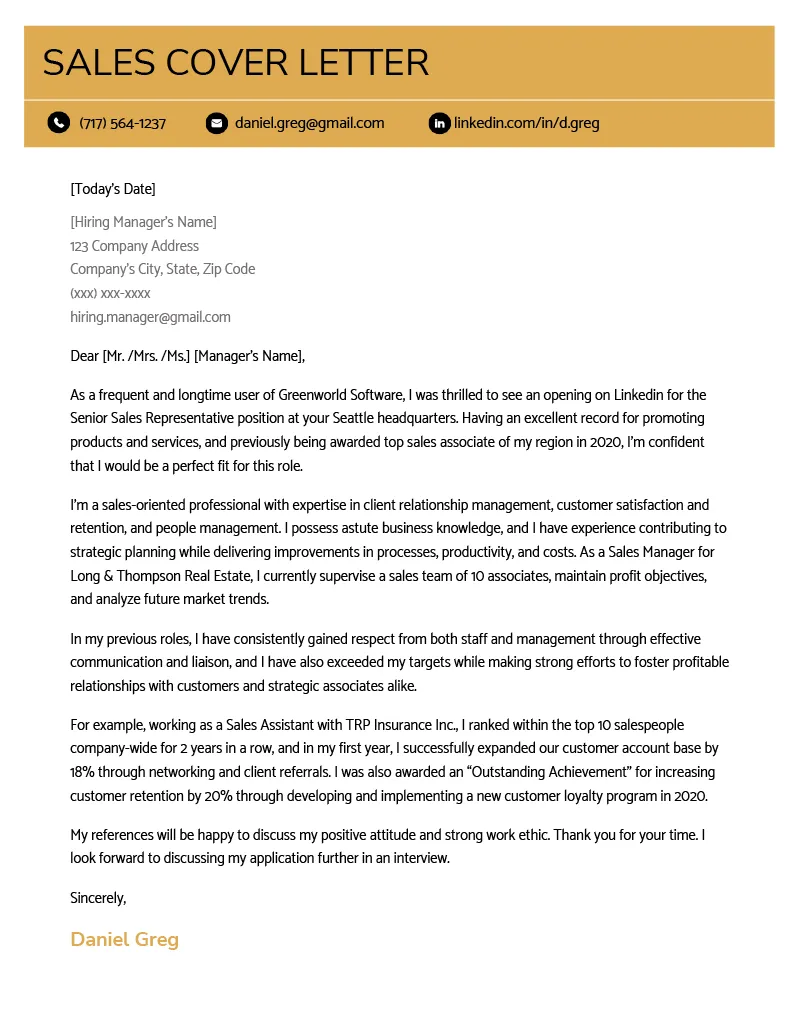
The closing paragraph is your last opportunity to leave a lasting impression. Restate your interest in the role and express your enthusiasm for the company. Thank the hiring manager for their time and consideration. Make it clear that you’re eager to discuss your qualifications further. Include a call to action. Encourage the hiring manager to contact you for an interview. Keep your closing concise and professional. Express your gratitude. Your goal is to reiterate your interest and make it easy for the hiring manager to take the next step. This final paragraph should leave the reader with a positive impression. A strong closing reinforces your key points and summarizes your interest in the role.
Expressing Your Enthusiasm
Expressing genuine enthusiasm is a great way to close your cover letter. Show how excited you are about the opportunity. Reiterate your interest in the role, and demonstrate your eagerness to contribute to the company’s success. Mention why you believe you’d be a good fit. Briefly summarize how your skills and experience align with the job requirements. Make sure your tone is sincere and reflects your genuine interest in the company and the position. Showing your enthusiasm can leave a lasting impression on the hiring manager. Expressing your enthusiasm can significantly increase the chances of getting invited for an interview. This enthusiasm helps you connect personally.
Providing Contact Information
Make it easy for the hiring manager to contact you. Include your contact information in the closing or at the end of the letter. Make sure to include your phone number, email address, and a link to your LinkedIn profile, if applicable. Ensure your email address is professional. Double-check your contact information for accuracy to ensure the hiring manager can reach you easily. Make sure your contact information is up-to-date and easy to find. This will make it simple for the hiring manager to contact you.
Proofreading and Editing Your Cover Letter
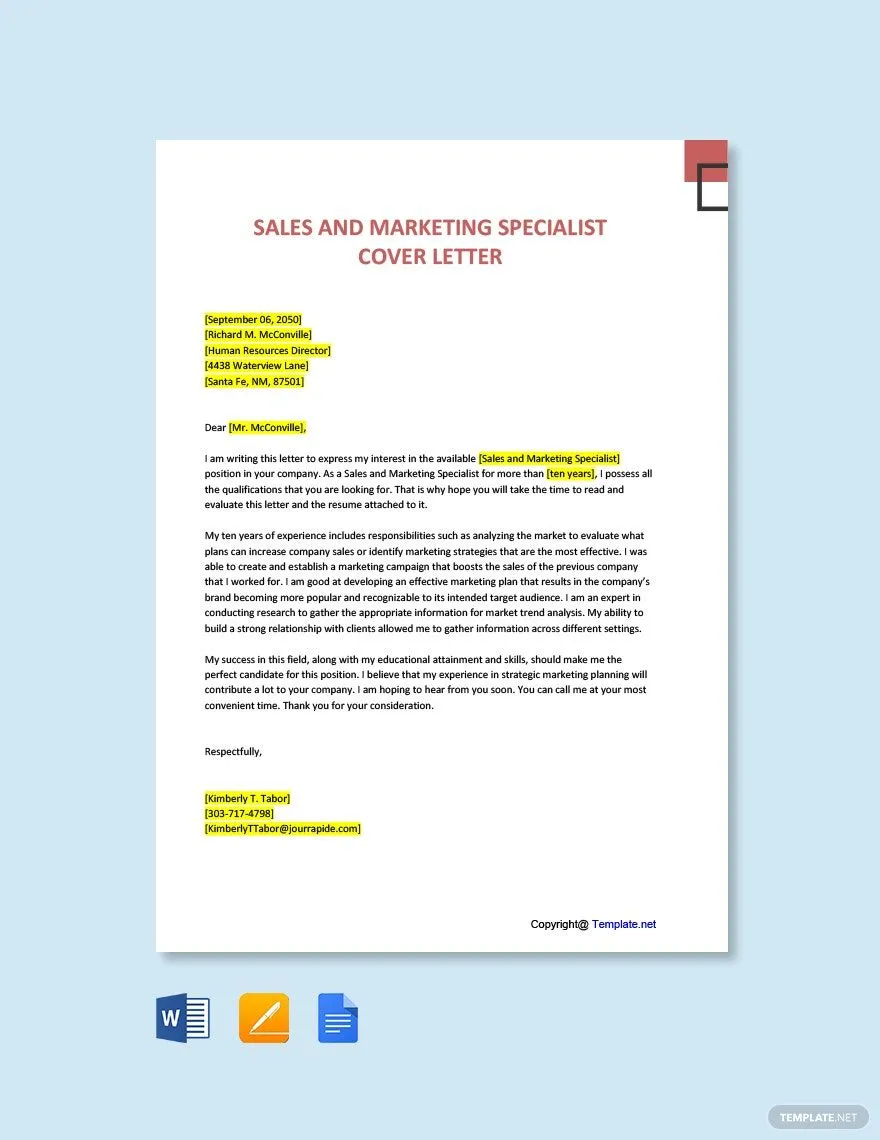
Proofreading and editing are essential to ensure your cover letter is polished and professional. Always read through your cover letter multiple times. Check for any typos, grammatical errors, and spelling mistakes. Have someone else read your cover letter too. A fresh pair of eyes can often catch errors that you might miss. Make sure to verify that all your sentences are clear, concise, and easy to understand. Errors can undermine your credibility, so make sure your cover letter is free of errors. Professional cover letters always need to be proofread and edited. Make sure your tone and style are consistent throughout. Be confident and ready.
Checking for Grammar and Spelling
Carefully check your cover letter for grammar and spelling errors. These errors can make you appear unprofessional and damage your chances of landing an interview. Use a grammar and spelling checker, but do not rely on it completely. Always read through your cover letter multiple times. Review your sentences for clarity and correctness. Ensure your word choices are appropriate and that your writing flows smoothly. Take extra care to check names, dates, and any specific details mentioned in the cover letter. Proofreading takes time, but it’s worth the effort. Make sure your writing reflects your professional expertise.
Formatting Your Cover Letter for Readability
Formatting your cover letter for readability is important for a positive first impression. Ensure your cover letter looks clean and easy to read. Use a professional font, such as Arial or Times New Roman, with a font size between 11 and 12 points. Use consistent formatting throughout the document, including the spacing, alignment, and bullet points. Keep your paragraphs relatively short. Avoid large blocks of text, and use headings and subheadings to break up the content and make it easy to scan. A well-formatted cover letter shows that you pay attention to detail and respect the hiring manager’s time. Effective formatting can help your key skills stand out. Use formatting to emphasize important points and to guide the reader.
Choosing the Right Font
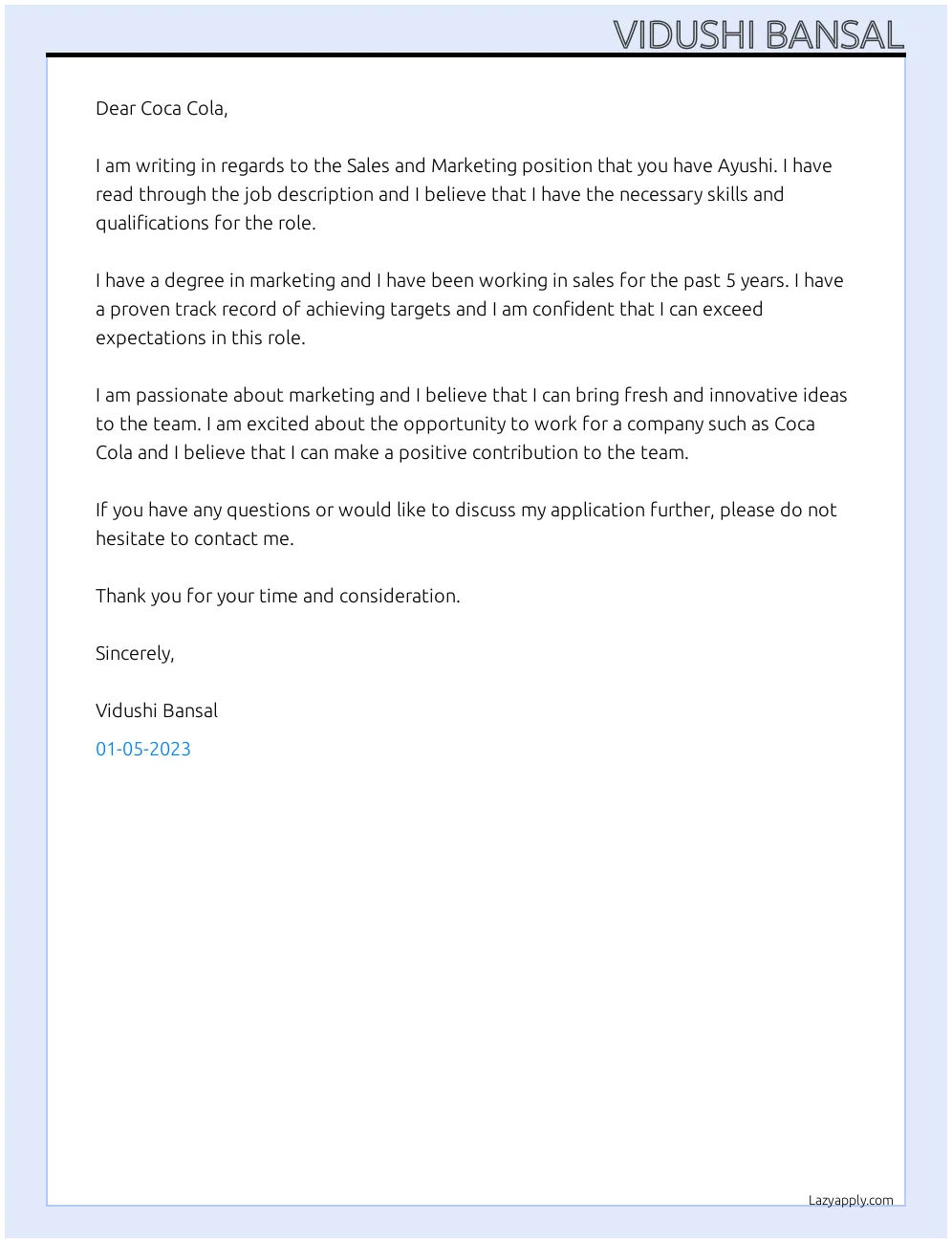
Choosing the right font is crucial for readability and professionalism. Opt for a professional font, such as Arial, Times New Roman, or Calibri. These fonts are widely recognized and easy to read. Avoid using fonts that are overly decorative or difficult to read. Your goal is to make the text accessible. Keep the font size between 11 and 12 points. This will ensure that your text is easy to read without being too large or too small. Font choice shows your attention to detail and your understanding of professional standards. Make sure the font is clear and consistent throughout your cover letter.
Formatting for Applicant Tracking Systems
Applicant Tracking Systems (ATS) are used by many companies to screen cover letters and resumes. To increase your chances of getting past the ATS, format your cover letter accordingly. Use a simple, clean format. Avoid using tables, images, or complex formatting, which can cause problems with ATS. Use standard fonts and sizes. Focus on using keywords. Keywords help the ATS identify your qualifications. Save your cover letter as a .doc or .docx file. These formats are generally compatible with most ATS systems. Keep your cover letter organized. The formatting can help your cover letter get through the ATS.
Marketing Sales Cover Letter Mistakes to Avoid
Avoiding common mistakes can greatly increase your chances of success. Generic cover letters, typos, grammatical errors, and a failure to align with the job description are major red flags. Avoid these errors to make a better impression. Take your time and focus on crafting a cover letter that is as strong and effective as possible. Proofread thoroughly and use spell-check before submitting. A great cover letter is crucial to your success. Focus on showcasing your skills and experiences and tailor your letter to fit each role. Following these points can help you stand out and get noticed.
Generic Cover Letters
Sending a generic cover letter is a significant mistake. Generic cover letters show a lack of effort. Each cover letter should be tailored to the specific job and company. Research the company and role, and then tailor your letter accordingly. Emphasize the aspects of your skills and experience that are most relevant to the job description. Show the hiring manager you are genuinely interested in the specific position. Avoid using general phrases that could apply to any job. Your cover letter should be unique and tailored. Customize your letter to show you understand what the company needs.
Typos and Grammatical Errors
Typos and grammatical errors can be a huge red flag. They make you look unprofessional and careless. Always proofread your cover letter multiple times to ensure there are no errors. Ask someone else to read it as well. Use grammar and spelling checkers. However, don’t rely on these tools completely. Read your cover letter carefully. Correcting all mistakes will greatly improve your chances. Typos and errors can harm your chances. A polished cover letter will reflect positively on your attention to detail.
Ignoring the Job Description
Ignoring the job description can reduce your chances. The job description provides critical insights into the role. Make sure you address each requirement and highlight your related skills and experience. Use the same keywords as in the job description. This will make your cover letter more relevant. Always explain how your skills align with the company’s needs. Ensure you answer all the required points. Failure to address the requirements is a missed opportunity. By carefully addressing the job description, you will make it easy for the hiring manager to see you as a great fit.
Submitting Without Proofreading
Submitting your cover letter without proofreading is a major mistake. You will miss errors. Always read your cover letter more than once. Ensure your writing is correct and effective. Have another person review your cover letter as well. A second pair of eyes can catch things you might have missed. Correcting all mistakes can greatly improve your chances. Make sure your writing reflects well on you. Your attention to detail will show your professionalism. Submit your best work.
